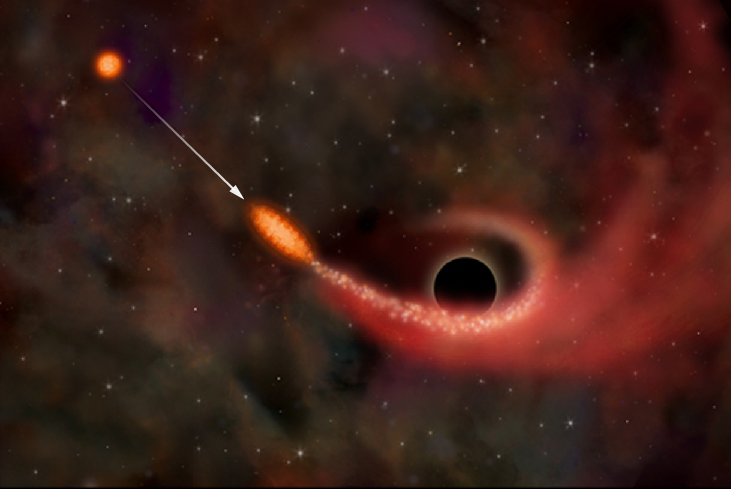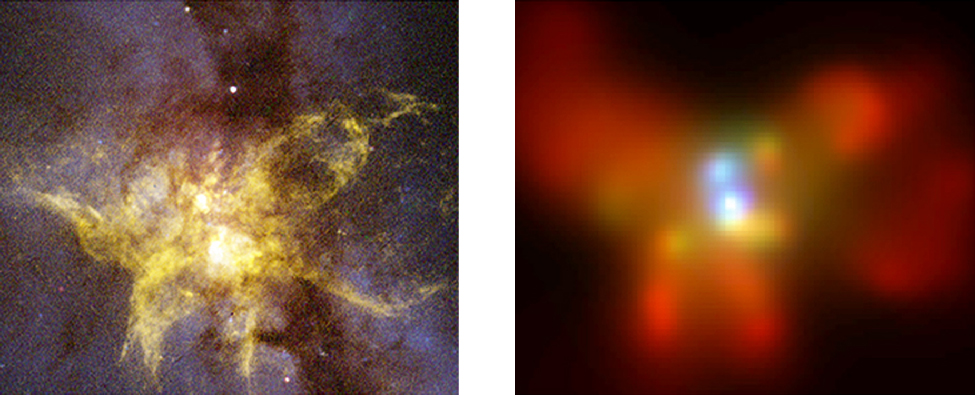| << Chapter < Page | Chapter >> Page > |

Another source of fuel for the black hole is the collision of its host galaxy with another galaxy. Some of the brightest galaxies turn out, when a detailed picture is taken, to be pairs of colliding galaxies. And most of them have quasars inside them, not easily visible to us because they are buried by enormous amounts of dust and gas.
A collision between two cars creates quite a mess, pushing parts out of their regular place. In the same way, if two galaxies collide and merge, then gas and dust (though not so much the stars) can get pushed out of their regular orbits. Some may veer close enough to the black hole in one galaxy or the other to be devoured by it and so provide the necessary fuel to power a quasar. As we saw, galaxy collisions and mergers happened most frequently when the universe was young and probably help account for the fact that quasars were most common when the universe was only about 20% of its current age.
Collisions in today’s universe are less frequent, but they do happen. Once a galaxy reaches the size of the Milky Way, most of the galaxies it merges with will be much smaller galaxies— dwarf galaxies (see the chapter on Galaxies ). These don’t disrupt the big galaxy much, but they can supply some additional gas to its black hole.
By the way, if two galaxies, each of which contains a black hole, collide, then the two black holes may merge and form an even larger black hole ( [link] ). In this process they will emit a burst of gravitational waves. One of the main goals of the European Space Agency’s planned LISA (Laser Interferometer Space Antenna) mission is to detect the gravitational wave signals from the merging of supermassive black holes.


Notification Switch
Would you like to follow the 'Astronomy' conversation and receive update notifications?